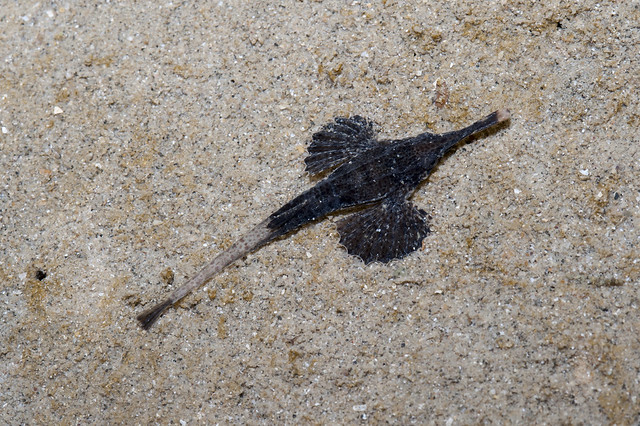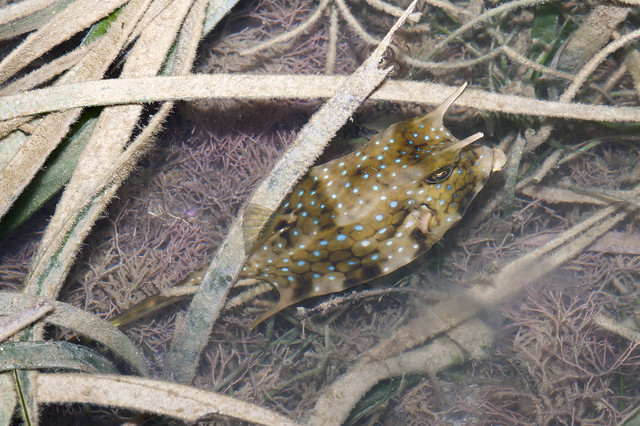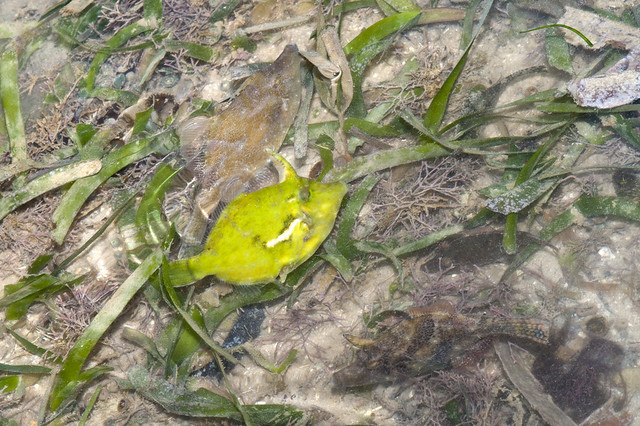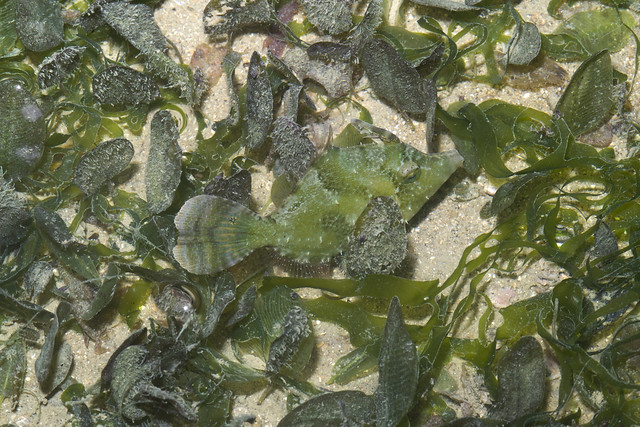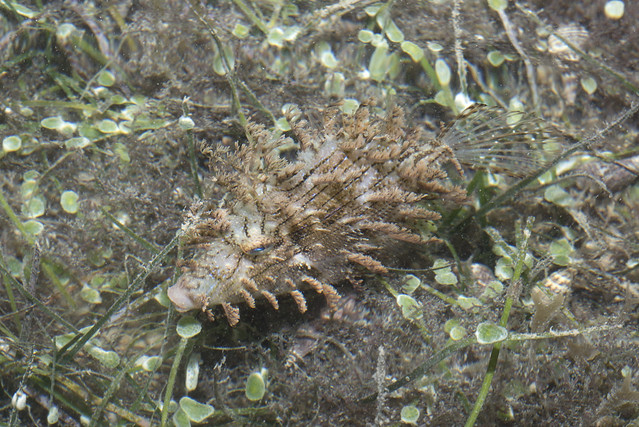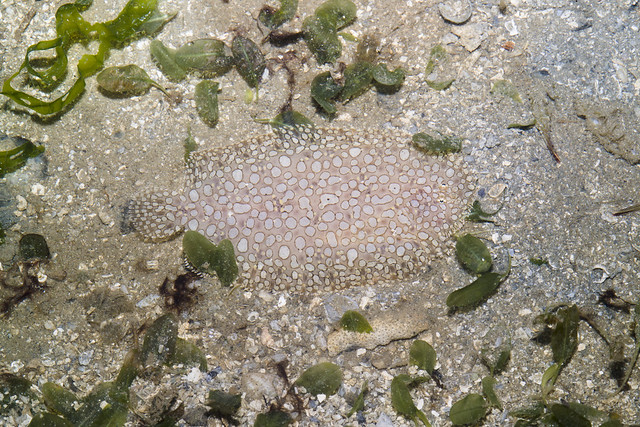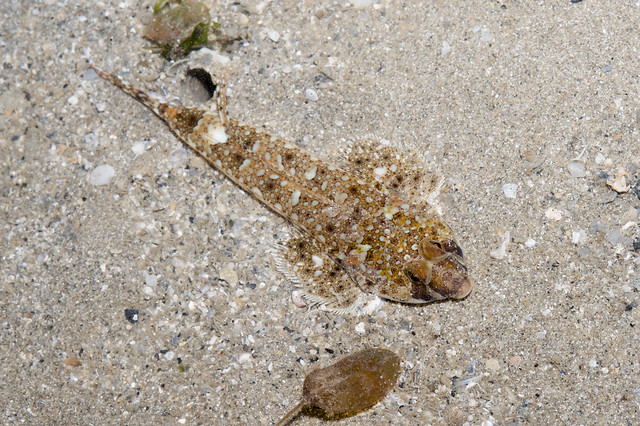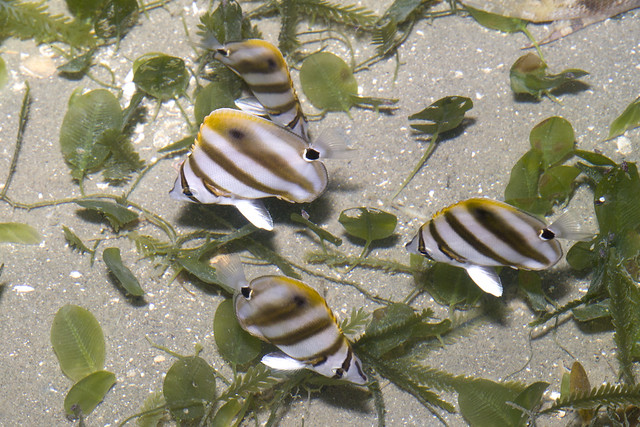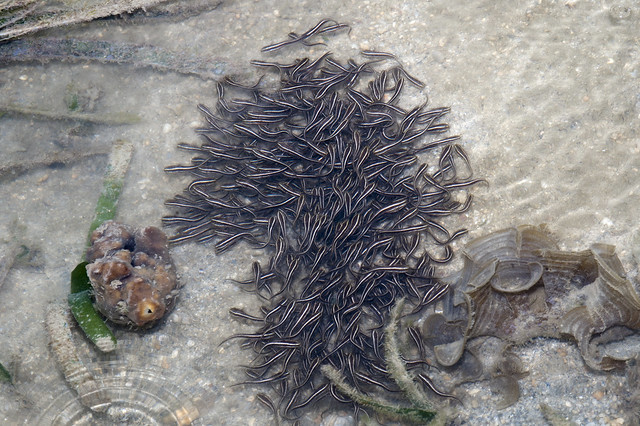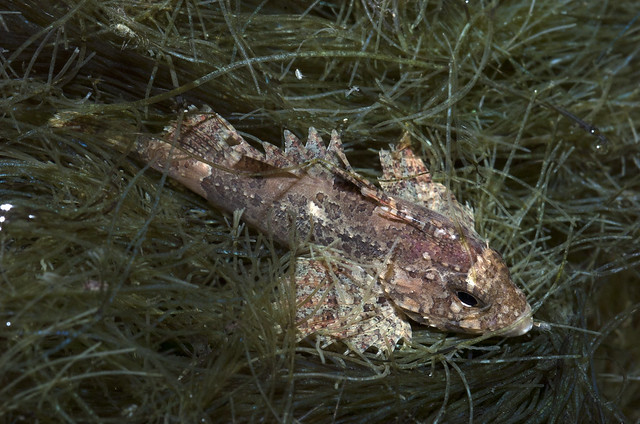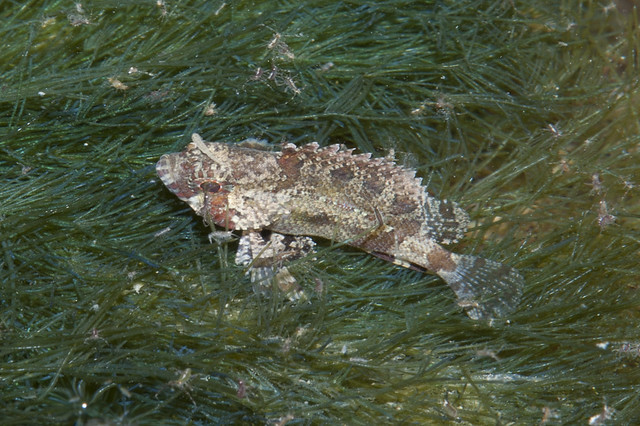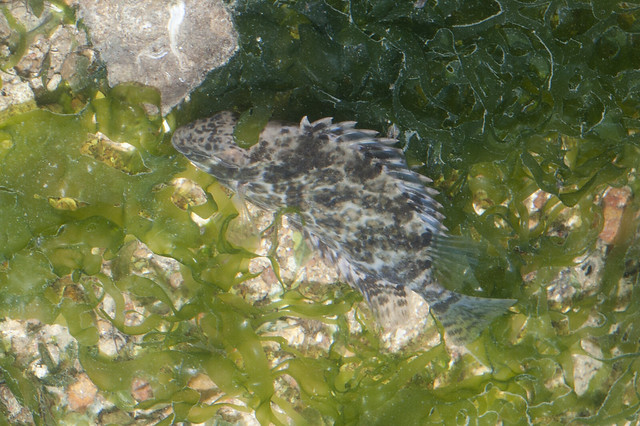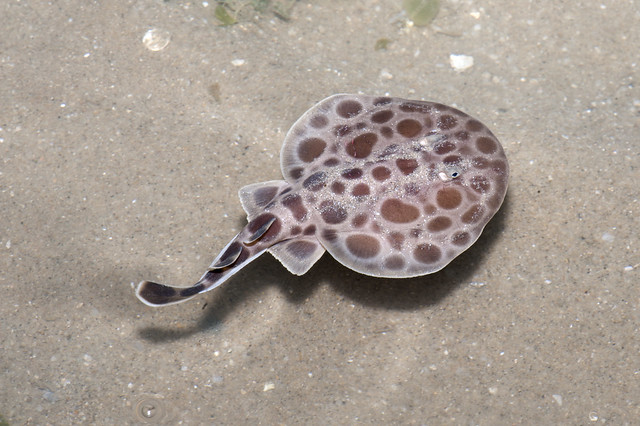Here's more about seahorses and other odd-shaped fishes that are found in Singapore seagrass meadows. They often look unfish-like, and some also have strange ways of moving around.
Seahorses are fishes! They are superbly camouflaged and thus often overlooked. Some may be as large as 11cm, but there are tiny ones too. Seahorses are often found in mated pairs. Seahorses of the same species may have different colours.
Seahorses reproduce in a peculiar way. It is male that carries the eggs in his body and thus becomes 'pregnant'. The female lays her eggs in his pouch. Emerging from the eggs, the babies hatch as miniature seahorses and may remain in the pouch for a while before the father goes into 'labour' and ejects them out of the pouch. Seahorses have few natural predators. Being virtually skin and bones, they don't make particularly good eating. Humans are the main threat to seahorses.
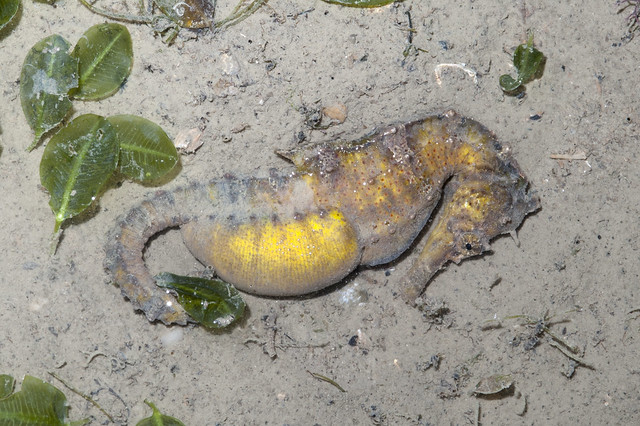 |
| A 'pregnant' papa seahorse, his pouch bulging with babies. |
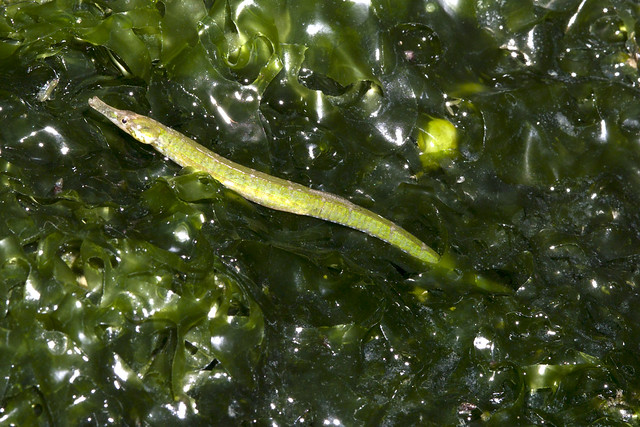 |
| A papa pipefish, with a bulging pouch under his body. |
A living box with pointy bits is the Longhorn cowfish! Its body is basically a hard shell made up of bony plates with gaps for tiny fins, the tail and a downturned tubular mouth. It blows sand with its mouth to uncover and eat tiny animals in the sand.
Fishes adapted for seagrass meadows are often flattened to slip among the seagrass blades. Filefishes are flattened sideways and can change their colours to blend in with their suroundings. There are three filefishes in this photo, can you spot them?
Some tiny filefishes are the same shape, size and colour of seagrass blades! These fishes don't swim well, although they can make a short quick dash to escape predators.
The Feathery filefish is really hard to spot as it resembles fluffy seaweeds in the meadows.
Some other fishes are flattened downwards and stay close to the ground. Many flatfishes are hidden in the sand among the seagrasses. The Peacock sole is well camouflaged even when above the sand.
Instead of swimming, the Zebra sole crawls along the bottom with undulations of its side fins!
Dragonets are another kind of flattened fish with a downturned mouth to suck up titbits from the sand. Instead of scales, the body is covered in a tough skin and usually coated with mucous that has a bad taste and smell. So they are sometimes also called stinkfishes.
Seagrass meadows shelter young fishes. Groups of young Kite butterflyfish are sometimes also seen in our seagrass meadows.
These tiny Striped eeltail catfishes often cluster together in 'balls' for safety. Each tiny fish has venomous barbs that can sting things that attempt to eat or disturb them.
The Longspined waspfish is quite common in our seagrass meadows. It can give a nasty zap if you touch it. But it won't harm you if you leave it alone.
The False scorpionfish resembles the waspfish but is harmless. Here's more on how to tell them apart.
Rabbitfishes can also give a nasty sting if handled. Small ones are common in our seagrass meadows. Adults are relished as 'Pei Tor', the Chinese believe it eating it brings good luck.
The most amazing sight I've seen in our seagrass meadows is this cute Numbfish. It belongs to the family of electric rays and can produce a numbing zap of electricity. I've seen it only a few times in the seagrass meadows on our Northern shores.
Where can I see seahorses and other odd seagrass fishes in Singapore?
One of the best ways is to ioin intertidal walks by NParks at Chek Jawa, Pulau Ubin.
Here's more about Singapore's seagrass meadows and how you can visit them and make a difference for them.
Learn more about Singapore fishes on the wild fact sheets on wildsingapore.
This article is written for Celebrating Singapore Shores as part of International Year of the Reef 2018.



